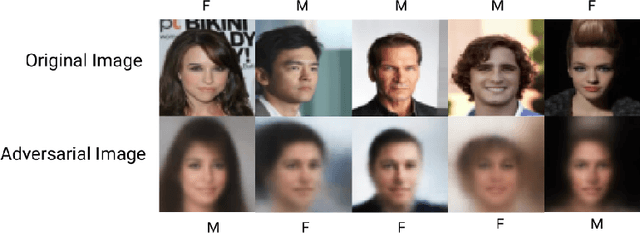Generating Out of Distribution Adversarial Attack using Latent Space Poisoning
Paper and Code
Dec 09, 2020



Traditional adversarial attacks rely upon the perturbations generated by gradients from the network which are generally safeguarded by gradient guided search to provide an adversarial counterpart to the network. In this paper, we propose a novel mechanism of generating adversarial examples where the actual image is not corrupted rather its latent space representation is utilized to tamper with the inherent structure of the image while maintaining the perceptual quality intact and to act as legitimate data samples. As opposed to gradient-based attacks, the latent space poisoning exploits the inclination of classifiers to model the independent and identical distribution of the training dataset and tricks it by producing out of distribution samples. We train a disentangled variational autoencoder (beta-VAE) to model the data in latent space and then we add noise perturbations using a class-conditioned distribution function to the latent space under the constraint that it is misclassified to the target label. Our empirical results on MNIST, SVHN, and CelebA dataset validate that the generated adversarial examples can easily fool robust l_0, l_2, l_inf norm classifiers designed using provably robust defense mechanisms.
 Add to Chrome
Add to Chrome Add to Firefox
Add to Firefox Add to Edge
Add to Edge